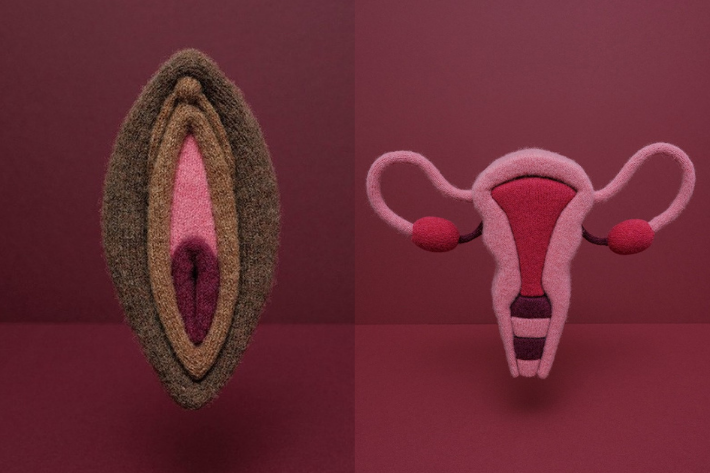Knowing how to look after your vagina, vulva, cervix, and uterus can lead to a healthier, safer, and more pleasurable life. More than just knowing the anatomy, understanding parts of the vulva and uterus can be the first step towards taking care of your own sexual health, pleasure, and wellbeing.
The vagina & vulva
The vagina is the muscular tube inside the body which runs from the vaginal opening to the cervix. The vulva is the external part of the genital area surrounding the vaginal opening.
The vulva and vagina come in different shapes and sizes and are totally unique to the individual.
Practicing a healthy lifestyle with a good diet and exercise can help keep the vagina and vulva in good shape. Walking and running can help tone up the pelvic floor, along with pelvic muscle training which is the practice of contracting and relaxing the pelvic floor muscles, also known as Kegels.
Natural hygiene
It is normal for the vagina to produce discharge – this discharge helps the vagina to clean itself naturally. Vaginal discharge can vary in amount and consistency throughout the menstrual cycle, pregnancy and menopause based on hormonal changes.
Healthy discharge doesn’t have a strong smell or colour and shouldn’t cause itching, burning or soreness. However, if you notice any unusual changes in smell or colour or any symptoms such as burning or itching associated with the discharge, contact your local healthcare provider.
Washing the vagina & vulva
We recommend gently washing the vulva with water alone or a mild unperfumed soap and to avoid using harsh scented products. This can help reduce the risk of infections such as thrush or bacterial vaginosis caused by perfumed soaps.
As noted above, the vagina cleans itself naturally. The vagina contains lots of good bacteria which protects it from other organisms and helps keep the pH levels in balance. The healthy pH balance can be disrupted by washing inside the vagina (douching) or using scented wipes and deodorants. We recommend avoiding douching and using scented products.
Sexually transmitted infections (STIs)
During sex some bacteria and viruses can get into the vagina and make their way up to the cervix and uterus. These can lead to sexually transmitted infections (STIs) such as chlamydia, gonorrhea, genital herpes, and HIV. The vagina, cervix, and uterus can be protected from these infections by using a condom during sex.
Condoms are recommended as the only form of contraception to prevent unintended pregnancies and to protect against STIs, including HIV.
Always seek medical advice if you think you are at risk of an STI or experience changes to the smell or colour of discharge.
The cervix
The cervix is the lower, narrow end of the uterus that forms a canal between the uterus and vagina. It helps to keep bacteria and viruses from getting into the uterus and produces mucous to help sperm get through to fertilize an egg around the time of ovulation.
Cervical screening
The main tools in the fight against cervical cancer are vaccination and screening. Following the World Health Organization’s guidance, we recommend that all young people 9-26 years receive the HPV vaccination where available.
Regular cervical screening for adults is also highly recommended. Being screened regularly can help early detection of any abnormal cell changes in the cervix and ensure access to treatment to prevent cancer developing.
Depending on where you live, you may be invited to a screening. If not, contact your local healthcare provider to set up an appointment.
The uterus
Often described as pear-shaped, the uterus (womb) sits in the pelvis between the bladder and rectum and is connected to the vagina by the cervix. The uterus enlarges during pregnancy and often shrinks back to its original size within several weeks after delivery. On either side of the uterus are the fallopian tubes and ovaries, and together with the vagina and cervix make up the female reproductive system.
The lining of the uterus thickens and sheds each month which is what causes menstrual bleeding.
Taking care of your uterus
Like the rest of the body there are several ways to keep your uterus healthy including exercise and diet. However, there are some medical conditions, which can affect the uterus.
The uterus can be affected by painful conditions such as fibroids, polyps, endometriosis, and cancer. Some people may experience irregular menstrual bleeding or difficulty getting pregnant. Pain is often felt in the pelvic and lower abdominal areas.
It is important to seek medical advice from your local healthcare provider if you have any symptoms and concerns. Being proactive about your health and wellbeing can ensure you get access to the right treatment and care should you need it.
Main photos courtesy of Jessica Dance
when
Subject
Gynaecological









